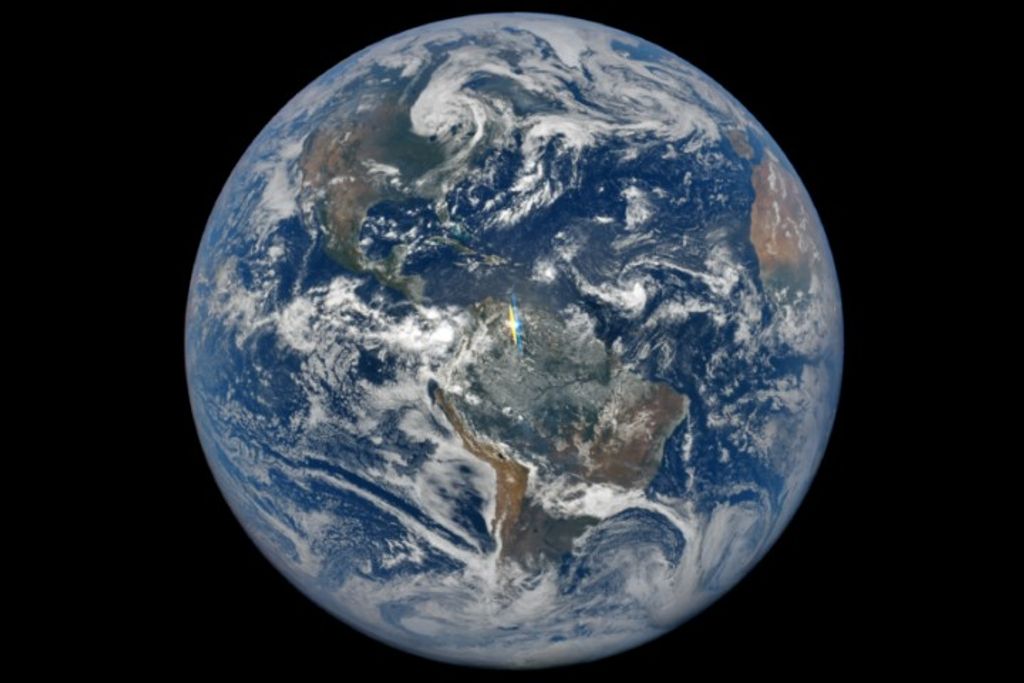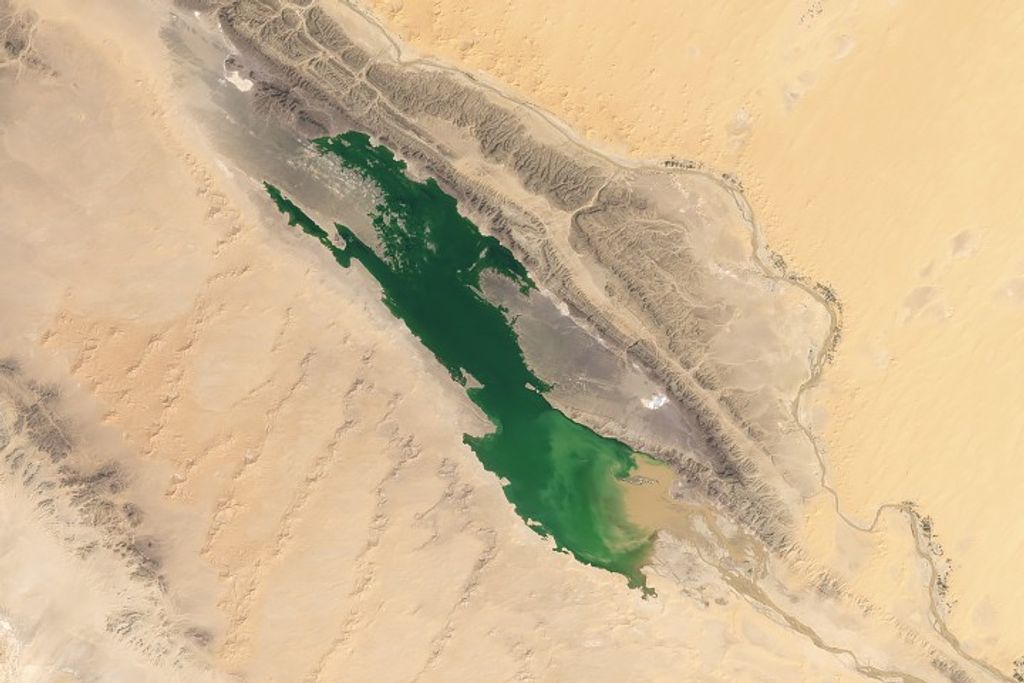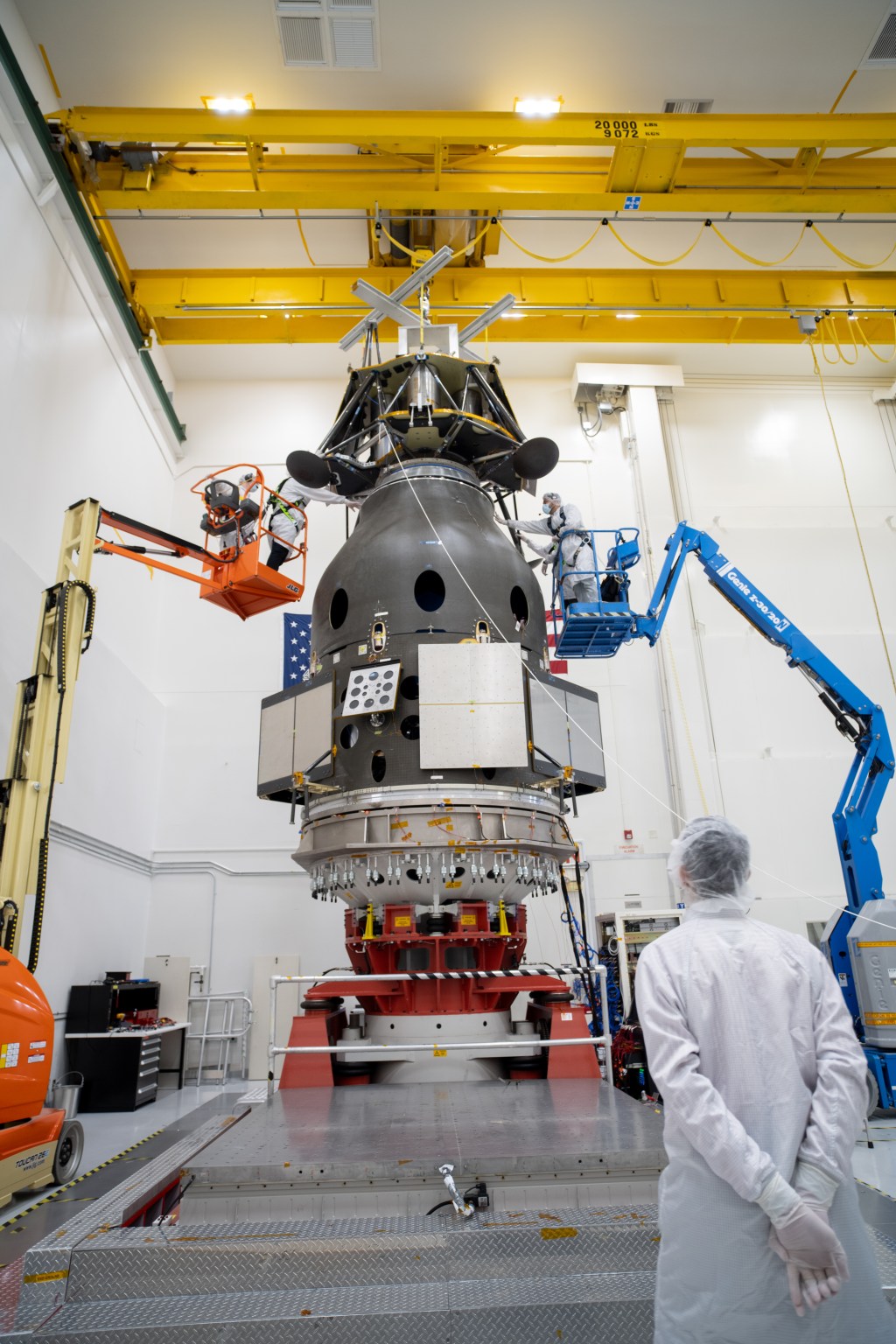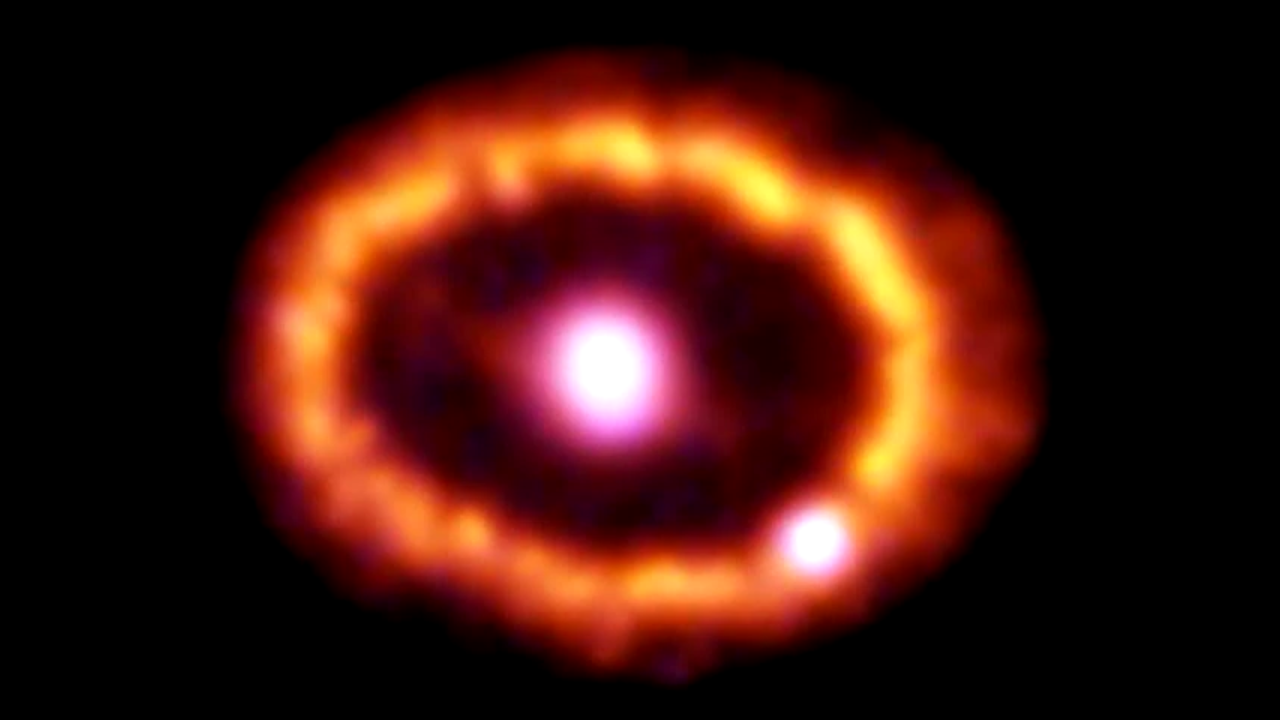1 min read
Observations of SN1987A at Different Wavelengths
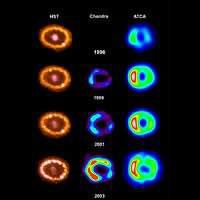
Hubble's optical light observations of Supernova 1987A become even more valuable when they are combined with observations from telescopes that can measure other kinds of radiation from the exploding star. The image shows the evolving images of hot spots from the Hubble Telescope alongside images taken at approximately the same time from the Chandra X-ray Observatory and the Australia Telescope Compact Array (ATCA) radio observatory. The X-ray images show an expanding ring of gas, hotter than a million degrees, that has evidently reached the optical ring at the same time as the hot spots appeared. The radio images show a similar expanding ring of radio emission, caused by electrons moving through magnetized matter at nearly the speed of light.
Taken together, these observations chronicle a rare event never seen by astronomers: the birth of a supernova remnant. Supernova remnants are regions of interstellar space that have been heated to several millions of degrees by the impact of the debris from exploding stars with surrounding gas. Astronomers have found dozens of supernova remnants in our Milky Way galaxy, caused by supernova explosions that have occurred in the past few thousand years.
About the Object
- R.A. PositionR.A. PositionRight ascension – analogous to longitude – is one component of an object's position.05h 35m 28.25s
- Dec. PositionDec. PositionDeclination – analogous to latitude – is one component of an object's position.-69° 16' 13.0"
- Object NameObject NameA name or catalog number that astronomers use to identify an astronomical object.SN1987A
- Release DateFebruary 19, 2004
- Science ReleaseSupernova Shock Wave Is Producing a Spectacular New Light Show
- CreditR. McCray (University of Colorado), D. Burrows and S. Park (Pennsylvania State University), and R. Manchester (Australia Telescope National Facility)
Related Images & Videos

Supersonic Shock Wave Heats Gas Ring Around Supernova 1987A (SN1987A)
Seventeen years ago, astronomers spotted the brightest stellar explosion ever seen since the one observed by Johannes Kepler 400 years ago. Called SN 1987A, the titanic supernova explosion blazed with the power of 100,000,000 suns for several months following its discovery on...
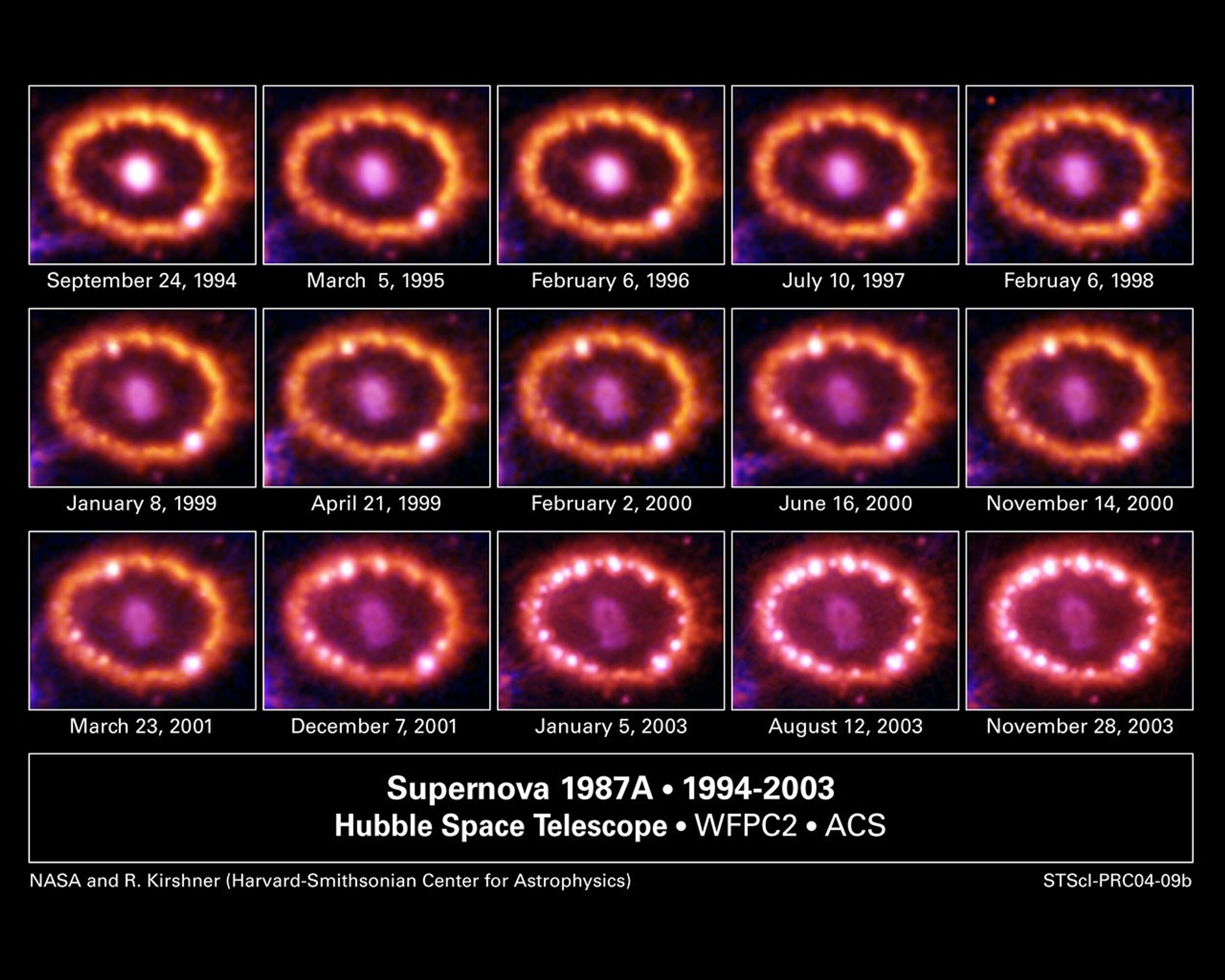
Hubble Supernova 1987A Scrapbook (1994-2003)
Since its launch in 1990, NASA's Hubble Space Telescope has watched a celestial drama unfold at a stellar demolition site. A shock wave unleashed during a stellar explosion, called Supernova 1987A (SN 1987A), has been racing toward a ring of matter encircling the blast site....
Share
Details
Claire Andreoli
NASA’s Goddard Space Flight Center
Greenbelt, Maryland
claire.andreoli@nasa.gov








